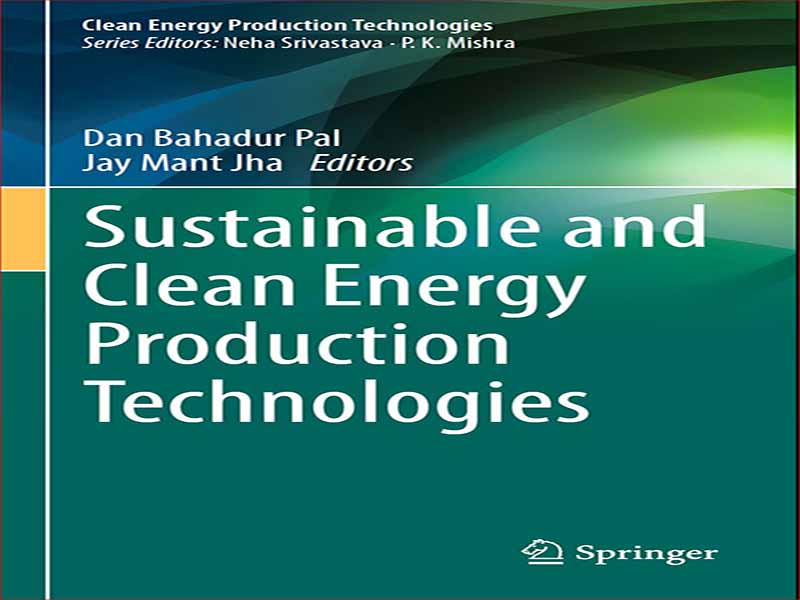- عنوان مجله: Sustainable and Clean Energy Production Technologies
- نویسنده: Dan Bahadur Pal
- حوزه: َانرژی پایدار
- سال انتشار: 2022
- تعداد صفحه: 290
- زبان اصلی: انگلیسی
- نوع فایل: pdf
- حجم فایل: 5.44 مگابایت
سوخت مبتنی بر پترو با افزایش نرخ فعلی مصرف به دنبال توسعه سریع صنایع، به شدت در حال کاهش است. با در دسترس بودن محدود سوختهای پترو، گرم شدن کره زمین و آلودگی ناشی از گازهای گلخانهای مشتق از نفت (GHGs)، نگرانی جهان به سمت سوخت زیستی جایگزین و نسل سوم که ظاهراً پایدار و دوستدار محیط زیست هستند، معطوف میشود. سوخت های زیستی نسل سوم شامل انواع سوخت های تولید شده با میکروجلبک ها و سیانوباکتری ها هستند و انرژی های جایگزین محبوبی هستند. بیشتر آبهای مناطق گرمسیری و نیمه گرمسیری در جهان به دلیل نور، دما و مواد مغذی بهینه که رشد ریزجلبکها و سیانوباکتریها را تسریع میکنند، در حال فرسودگی هستند. شکوفههای ریزجلبکها و سیانوباکتریها از نظر اجتماعی، اقتصادی و زیستمحیطی عمیقاً مناظر را تحت تأثیر قرار میدهند. تعداد محدودی از مطالعات در جهان نشان دادهاند که زیست توده ریزجلبکها و سیانوباکتریها گنجینهای دستنخورده است، زیرا مواد اولیه برای بسیاری از سوختهای زیستی، بهویژه لیپیدهای آنها، پتانسیل زیادی برای بیودیزل دارند. فرآیند ترانس استریفیکاسیون خواص سوخت را افزایش میدهد و لیپیدها را به شکل استر لیپیدی مربوطه تبدیل میکند و مولکولهای استر لیپید اکسیژن خاصیت سوختن محصول سوخت را افزایش میدهند. اکثر سیانوباکترها و ریزجلبکها میکروارگانیسمهای استراتژیک با سرعت تولید مثل و رشد بیشتر در شرایط محیطی حتی سخت هستند که شکوفههای سیانوباکتری و میکروجلبکی را تشکیل میدهند که پتانسیل بالایی برای استفاده برای بیودیزل ایجاد میکند. اگرچه بیودیزل حاصل از سیانوباکتری ها یا لیپیدهای ریزجلبک یک سوخت مایع جایگزین کلیدی است، اما چالش های زیادی در جایگزینی کامل پترودیزل برای موتورهای احتراق تراکمی (CI) بدون تغییر، به عنوان یک محصول تمیز، دارد. این فصل تولید بیودیزل از ریزجلبک ها و سیانوباکتری ها و چالش های مهم مربوط به زمینه جهانی را مورد بحث قرار می دهد.
Petro-based fuel is getting depleted vastly with the current higher rate of consumption following the rapid development of industries. With the limited availability of petro fuels, global warming, and pollution due to petroleum-derived greenhouse gases (GHGs), the world’s concern turns toward alternative, thirdgeneration biofuel which are supposedly sustainable and eco-friendly. Third-generation biofuels include the fuel types produced with microalgae and cyanobacteria and are popular alternative energies. Most of the water bodies in tropical and subtropical regions in the world are being eutrophicated, due to the optimum light, temperature, and nutrients which accelerated the growth of microalgae and cyanobacteria. Blooms of microalgae and cyanobacteria adversely affect socially, economically, and environmentally landscapes profoundly. A limited number of studies in the world have revealed that the biomass of microalgae and cyanobacteria is an untapped treasure chest, as feedstocks for many biofuel types, especially their lipids, have a great potential for biodiesel. The trans-esterification process enhances the fuel properties and transforms lipids into their relevant lipid ester form, and oxygenated lipid ester molecules enhance the burning property of the fuel product. Most cyanobacteria and microalgae are r strategic microorganisms with greater reproduction and growth rate in even harsh environmental conditions forming cyanobacterial and microalgal blooms which makes a high potential to be used for biodiesel. Though biodiesel from cyanobacteria or microalgae lipids is a key alternative liquid fuel, it has many challenges in replacing the petrodiesel completely for compression-ignition (CI) engines without modifications, as a neat product. This chapter discusses the production of biodiesel from microalgae and cyanobacteria and the important challenges concerning the world context.
این کتاب را میتوانید از لینک زیر بصورت رایگان دانلود کنید:
Download: Sustainable and Clean Energy Production Technologies




































نظرات کاربران